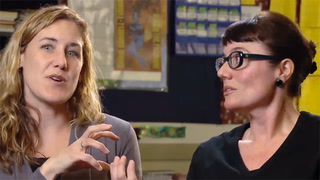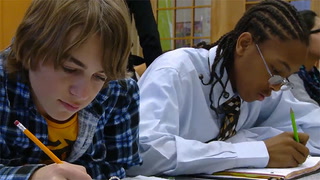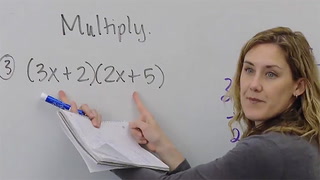Series Algebra Team: Algebra Team: Overview of Teaching Styles
Math.Practice.MP1
| Common core State Standards
- Math: Math
- Practice: Mathematical Practice Standards
-
MP1: Make sense of problems and persevere in solving them.
Mathematically proficient students start by explaining to themselves the meaning of a problem and looking for entry points to its solution. They analyze givens, constraints, relationships, and goals. They make conjectures about the form and meaning of the solution and plan a solution pathway rather than simply jumping into a solution attempt. They consider analogous problems, and try special cases and simpler forms of the original problem in order to gain insight into its solution. They monitor and evaluate their progress and change course if necessary. Older students might, depending on the context of the problem, transform algebraic expressions or change the viewing window on their graphing calculator to get the information they need. Mathematically proficient students can explain correspondences between equations, verbal descriptions, tables, and graphs or draw diagrams of important features and relationships, graph data, and search for regularity or trends. Younger students might rely on using concrete objects or pictures to help conceptualize and solve a problem. Mathematically proficient students check their answers to problems using a different method, and they continually ask themselves, \"Does this make sense?\" They can understand the approaches of others to solving complex problems and identify correspondences between different approaches.
Math.A-SSE.3a
Common core State Standards
- Math: Math
- A-SSE: Algebra - Seeing Structure in Expressions
-
3a: Choose and produce an equivalent form of an expression to reveal and
explain properties of the quantity represented by the expression.
a. Factor a quadratic expression to reveal the zeros of the function it
defines.
b. Complete the square in a quadratic expression to reveal the
maximum or minimum value of the function it defines.
c. Use the properties of exponents to transform expressions for
exponential functions. For example the expression 1.15t can be
rewritten as (1.151/12)12t â\x89\x88 1.01212t to reveal the approximate equivalent
monthly interest rate if the annual rate is 15%.
Save to My Resources
PLEASE CREATE A NEW ACCOUNT OR LOG IN TO ACCESS THIS CONTENT
Enjoy your first video for free. Subscribe for unlimited access.
Have questions about subscribing?
Click Here to learn more about individual subscriptions.
Click Here to learn more about School and Institution access.
Discussion and Supporting Materials
Thought starters
- How has the two teachers collaboration impacted their algebra program?
- How does the warm-up prepare students for the lesson?
- How do students "tiger up" and learn that struggle is a good thing?
School Details
Longfellow Arts And Technology Middle School1500 Derby Street
Berkeley CA 94703
Population: 497
Data Provided By:

Teachers
Marlo Warburton
Math / 8 / Teacher
Juliana Jones
Math / 8 / Teacher
Newest
|
4 MIN
|
5 MIN
|
5 MIN
UNCUT CLASSROOMS
| TCHERS' VOICE
English Language Arts













19 Comments
Aundrea Gamble Apr 23, 2020 12:20pm
1. How has the two teachers collaboration impacted their algebra program?
Having the two teachers plan out their lessons together and provide feedback to one another truly impacts their algebra program.
2. How does the warm-up prepare students for the lesson?
The warm-up prepares the students brain for the upcoming lesson. I love that the warm-up always ties into the lesson for the day.
3. How do students "tiger up" and learn that struggle is a good thing?
Students "tiger up" and learn that struggle is a good thing. If you aren't confused, you aren't learning. When you "tiger up" with other students that are struggling just the same they find it easier to persevere together.
Karen McElhenny Jan 8, 2017 10:12am
Keira Eddy Nov 10, 2016 9:40pm
Lisa Reyes Jul 21, 2014 6:19pm
Cody King Mar 2, 2013 2:22pm